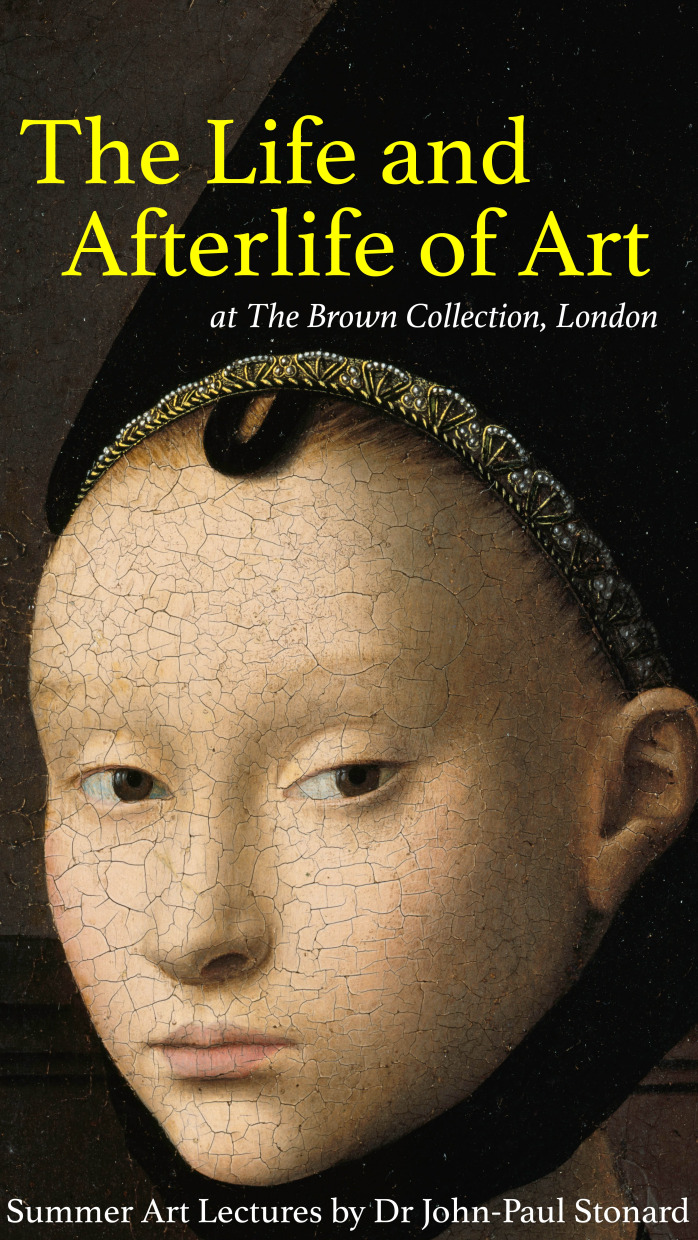THE LIFE AND AFTERLIFE OF ART by Dr John-Paul Stonard
The Life and Afterlife of Art offers a captivating voyage through the history of art, reaching back to the earliest images made by our ancestors, tracing the story through to the present day. Each lecture will take as its starting point a single work of art, using this image as the key to unlock a different era of human image-making.
Each lecture will last around 50 minutes and will be followed by a Q&A.
Lectures held in The Brown Collection, 1 Bentinck Mews, London, W1U 2AF.
1. THE HUNTER IN THE STARS, Tuesday 9 July, 6pm – Book Here
We begin with the earliest images, those carved from animal bone and painted on rock walls, but also those imagined projected into patterns of stars in the night sky. How and why did we first create recognisable images of things around us? And what does it mean that for the first thirty thousand years of art making, there was only one subject — animals? We take the story up to around 10,000 years ago, setting the scene for the story of art to come.
2. THE AFTERLIFE OF ANIMALS, Wednesday 10 July, 6pm – Book Here
We continue with the images of animals that arose from the first settled human societies, in ancient Mesopotamia, Egypt and China. With settled agricultural and pastoral forms of human life, the long tradition of animal imagery was pushed to the peripheries. We look at the afterlife of animals from ancient Scythia to the ‘barbarian’ art of Celtic and pre-Christian Europe, to the art of the Northwest Pacific Coast of America. How did images of animals fare in the new era of civilisation — and what has been the legacy of animal imagery in our own times?
3. IMAGES BEYOND BELIEF, Tuesday 16 July, 6pm – Book Here
How do you make in image of something you have never seen? How do you make images of invisible things? This was the dilemma facing the first religious artists, those charged with the task of making images that would become the focus for worship of the gods. What role did the images of art and architecture play in the rise of world religions? This lecture will look at the different forms of imagery and visual experience in the polytheism of the first city states, and in the religious images of ancient Greece, India and ancient Mesopotamia.
4. AWAKENINGS, Wednesday 17 July, 6pm – Book Here
Rather than a ‘Renaissance’ or ‘rebirth’ of the art and literature of the Greek and Roman age, the art made in Europe in the 1300s and 1400s appears more as a new awakening to the world of nature, for which antiquity simply provided a model. What was at the heart of this new awareness of nature, seen equally as a spiritual realm, and how did it reveal itself in different parts of the world, in northern and southern Europe, but also in east Asia, and in particular in the great tradition of Chinese painting? And what might be the afterlife of this great spiritual awakening to the natural world in the present day?
5. DRAWING FROM LIFE, Tuesday 23 July, 6pm – Book Here
Alongside the spiritual awakening of Giotto and his world, during the 1400s a different sort of awakening to the world of nature, and in particular to animals, appeared in the work of artists in northern Italy. This lecture looks first at the work of Pisanello, and then at the drawings of Leonardo da Vinci and Albrecht Dürer, in which the images of animals became the emblems of a new secular vision of the natural world — one that found its echo in the age of natural history illustration, and in particular the paintings of George Stubbs.
6. THE ART OF REAL LIFE, Wednesday 24 July, 6pm – Book Here
This lecture contrasts two great works, both in their own way summaries of the art of painting: Johannes Vermeer’s The Art of Painting, c.1666 and Las Meninas, c.1656 by Velázquez. What made this new great realism of painting, in the works of artists from Caravaggio to Rembrandt, possible? And what was the legacy of this realism in the art of the eighteenth and nineteenth centuries?
7. AN IMAGE OF THE MIND, Tuesday 30 July, 6pm – Book Here
In this lecture we launch into the art of modern times, and the simple idea that art became a form of philosophy — a representation of the human mind, and the processes of seeing and thinking. We look at the origins of this revolution in the work of Paul Cézanne, and trace his legacy through the first three decades of the twentieth century in the work of Picasso and Mondrian. But what were the alternatives to this story of Modernism, and how has it been revised in the ‘Afterlife’ of modern art?
8. TIME REGAINED, Wednesday 31 July, 6pm – Book Here
As we voyage into our own times, the spectacle of art becomes increasingly overwhelming — the great firmament of modern and contemporary art has few if any historical parallels. We plot our way through these tumultuous times with a series of questions about how ideas of art have changed and what art actually does – what ‘art’ might be, considered as a verb. We draw together many of the themes that have arisen over the course of our journey through the history of art, and ask some fundamental questions about why art remains such a vital source of knowledge and solace in our world today.
